
Back to Our Roots

You’ve probably heard the term “invasive plant” before. It likely conjures up images of things like kudzu growing hungrily over the landscape, smothering all other plants in its wake. While most invasive plants are not as oppressive as kudzu, they still cause plenty of their own problems, including spreading beyond their intended boundaries and competing with, and even out-competing, native plants. Although the term “invasive” is commonly used to describe plants that spread aggressively, a true invasive plant is a non-native or exotic plant that is likely to cause economic, environmental, or human harm, as described by the US Forest Service. Chinese privet (Ligustrum sinense), below, is one such plant that is considered invasive in our area.
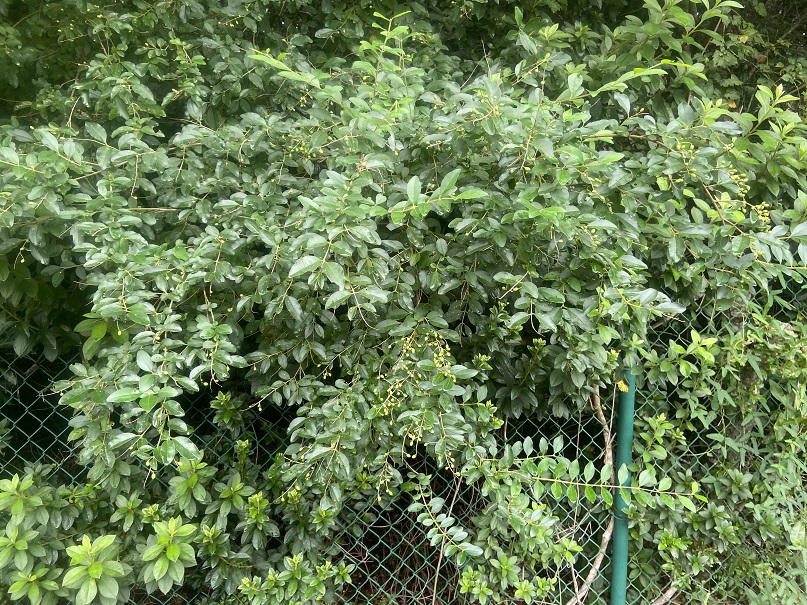
Part of Brookgreen Gardens’ mission is to display native plants of the South Carolina Lowcountry, like the red buckeye (Aesculus pavia), below. While native plants are indeed a part of our collection, our gardens also include mannerly exotics. Sometimes though, non-native plants in our gardens, some that have been here for years and others that are more recent, wind up on the invasive plant list. This list, which you can find here is created by the South Carolina Exotic Pest Plant Council and is a helpful guide in knowing what plants have been identified as invasive, and therefore a threat to our native flora and fauna.

With our sights directed towards the environment, our mission, and our collection, we have taken a more critical look at the plants within our gardens. We have been mindful of plants that have been identified on the invasive plant list and are doing our part to eliminate the ones that have been deemed threats. Thanks in part to a grant from the South Carolina Native Plant Society (SCNPS) – Lowcountry Chapter, we identified and removed invasive plants within our collection and replaced them with native alternatives, while also adding in additional native plants to open spaces already existing within the Gardens.

Going into this project, we had three plants firmly in mind for removal: Chinese parasol tree (Firmiana simplex), thorny olive (Elaeagnus pungens), and winter honeysuckle (Lonicera fragrantissima), pictured above. Considering plants for removal, especially ones that have long been a part of our collection, is not a decision we take lightly. With these plants designated as invasive in our area, it was a decision we knew we had to make and were comforted in the knowledge that we were replacing these invasive plants with ones native to our area. The removals were a step forward in helping to stop the spread of plants that have been known to displace native plants and limit the food sources of our native fauna.
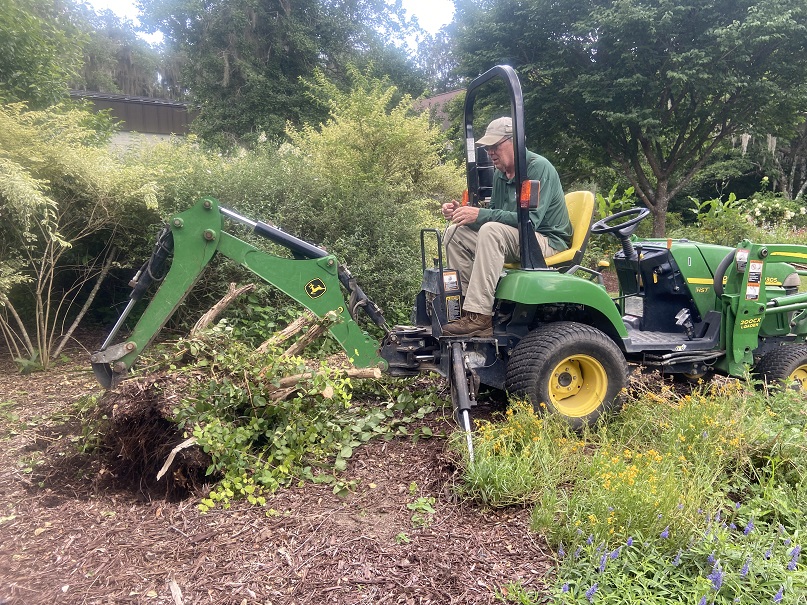
With the help of our talented Brookgreen Gardens’ horticulture staff, our three invasive plants were removed. The Chinese parasol tree created space for a witch hazel (Hamamelis virginiana), as well as some other neat additions, like mayapple (Podophyllum peltatum ‘Missouri May’) and little brown jug (Hexastylis arifolia) near the Old Kitchen.
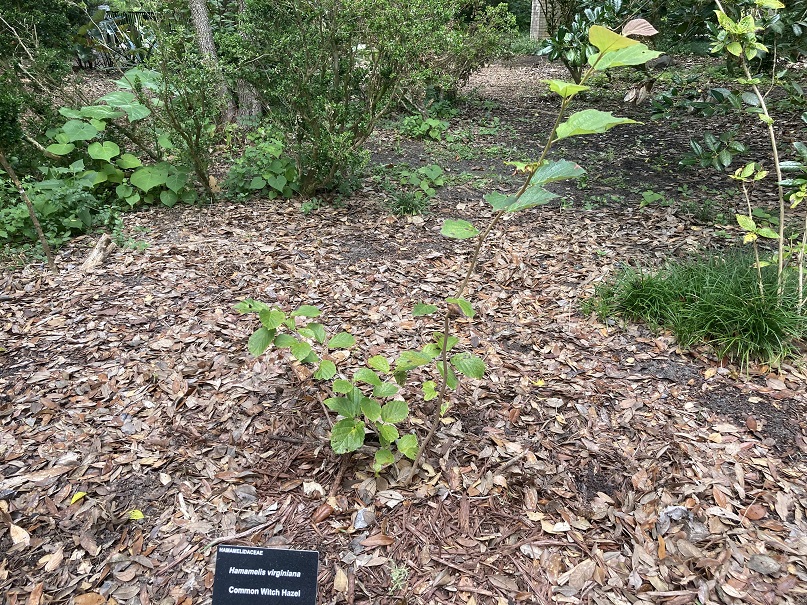
The thorny olive was removed from the pergola near The Athlete, towards the back of Live Oak Allée, and was replanted with two new vines. Our state flower, yellow jessamine (Gelsemium sempervirens ‘Pride of Augusta’), will be displayed prominently, as well as non-native honeysuckle (Lonicera periclymenum ‘Scentsation’). While these vines are young, we are excited to see them scale the pillars and fill in the space overhead with their beautiful and fragrant flowers!
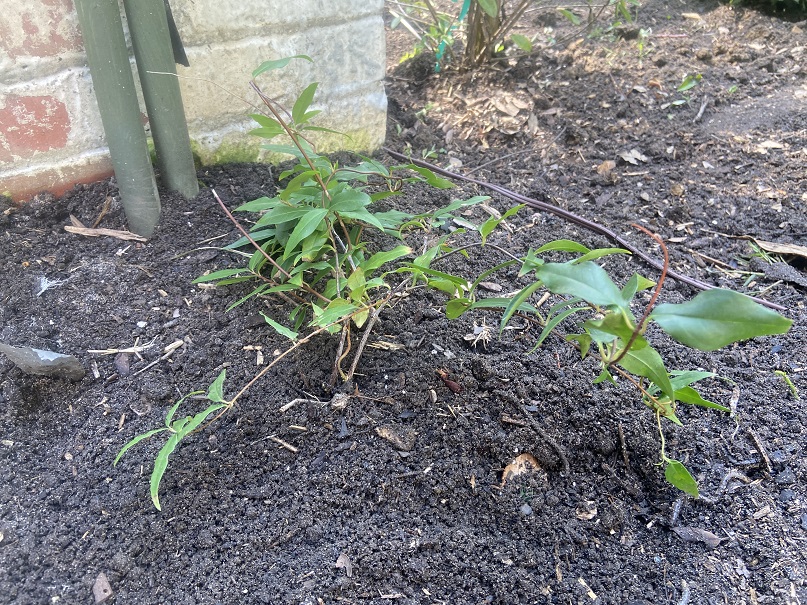
Meanwhile, in the Upper Right Wing, removing the winter honeysuckle made way for a buttonbush (Cephalanthus occidentalis) – a native shrub with round, funky-looking flowers! As with our other native plants, this will be a great food source for pollinators and other fauna.
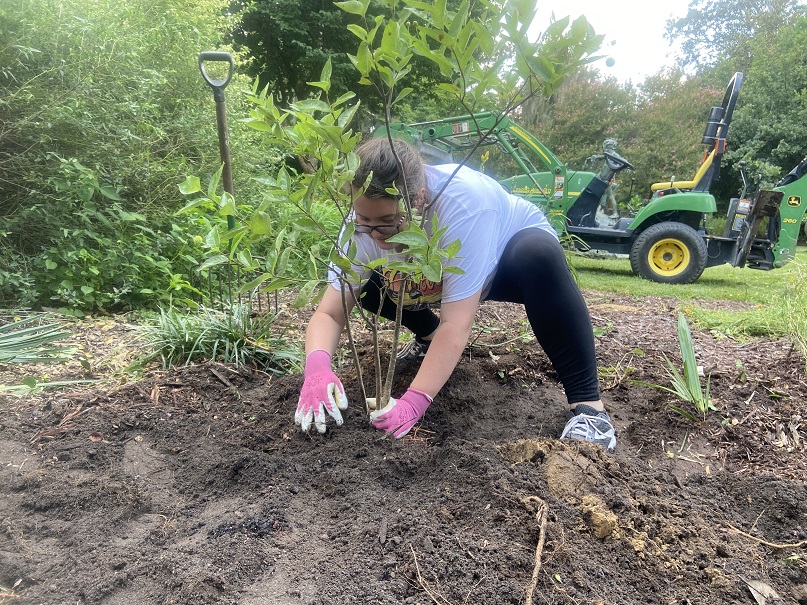
With open garden space available to us, we used this opportunity to continue adding more native plants to our collection. Some plants we included were white flowering rose mallow (Hibiscus coccineus (White-Flowered)) into our bogs, blunt mountainmint (Pycnanthemum muticum) and golden canna (Canna flaccida), pictured below, at Heron, Grouse, and Loon, as well as wild pink (Silene caroliniana var. wherryi 'Short and Sweet') near the Old Kitchen, in the Lower Left Wing.
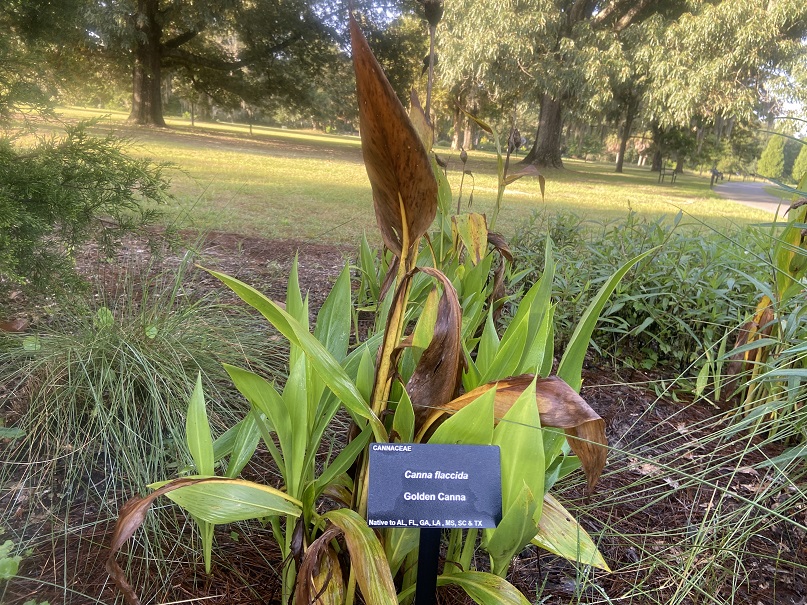
Invasive plant removal is an ongoing process that requires continual monitoring, action, and remaining up to date on the latest additions to our state’s list of identified invasive plants. While we wish the hardest choice for the gardens was only making a firm line on how many annuals we use each summer, sometimes the decisions are a bit harder but very necessary.
See you in the Gardens!
Hours
Hours: Monday & Tuesday 9:30 AM - 5:00 PM
Wednesday - Sunday 4:00 PM - 9:00 PM
For daytime admission, gates close at 4:30 PM. For their safety and the safety of our animal collection, pets are not allowed, nor can they be left in vehicles inside Brookgreen. Service animals that have received special training to assist disabled persons are welcome.
Tickets
Daily General Admission Tickets for 7 consecutive days
Children 3 and under: Free
Children 4-12: $14
Adults 13-64: $25
Seniors 65 & Over: $23
Location
1931 Brookgreen Drive
Murrells Inlet, SC 29576
Off US Highway 17 Bypass, between Murrells Inlet and Pawleys Island on South Carolina's Hammock Coast
843-235-6000
GOOGLE DIRECTIONS